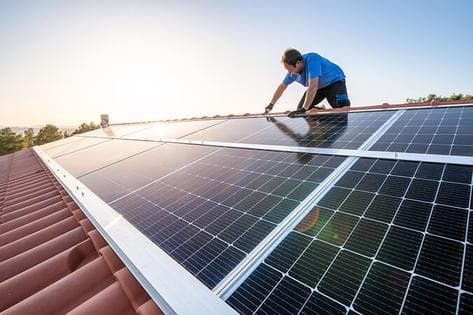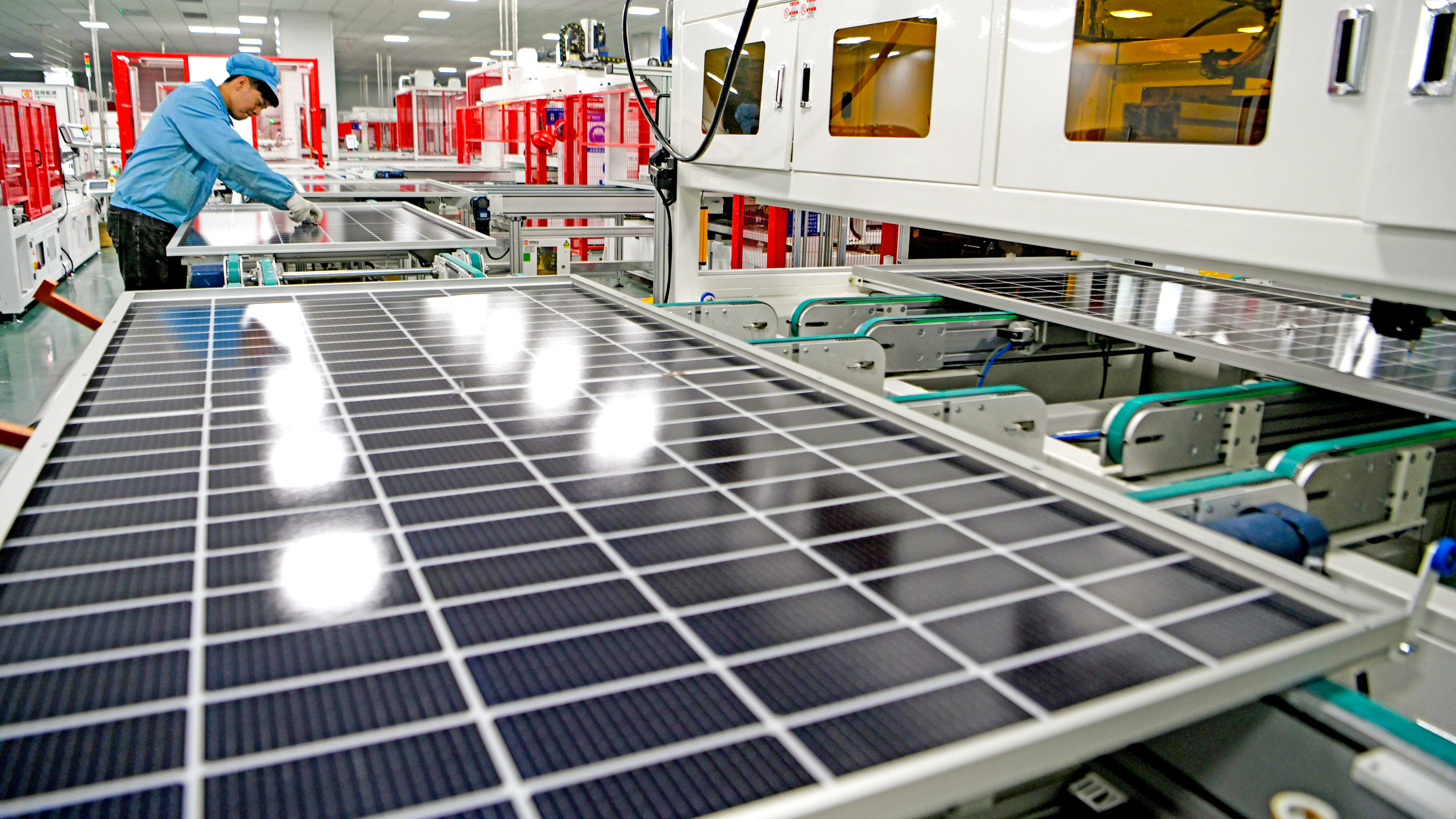The Ultimate Guide To Residential Solar Panels Pa
The Ultimate Guide To Residential Solar Panels Pa
Blog Article
Clean Energy Installers PA: Our Firm Specializes In The Installation And Management Of Photovoltaic Energy Systems
History and Development of Photovoltaic Panel Companies
The creation of photovoltaic panel companies can be traced back to the 1800s when Alexandre Edmond Becquerel discovered the photovoltaic impact. Would he have envisioned how his discovery would change the method we harness energy?
Early Starts

In 1954, Bell Labs established the very first useful solar battery. This marked a considerable milestone in the history of solar power. They were at first used to power area satellites, but who understood this was just the beginning?
Development and Development
- In the 1970s, an energy crisis resulted in increased interest in renewable resource sources, including solar power.
- By the 1990s, improvements in innovation and increasing environmental awareness resulted in the development of photovoltaic panel business globally.
A New Era
As we went into the 21st century, the solar market saw an exponential development. The need for clean and renewable resource brought about a brand-new period in the photovoltaic panel market.
Fascinating Truths
- The world's first solar energy station was integrated in 1982 in Hisperia, California.
- By 2019, solar power had ended up being the world's fastest-growing source of power.
The journey of solar panel companies has been exceptional, hasn't it? The future holds enormous capacity, with constant developments paving the method for a sustainable future. Can we picture a world powered completely by solar energy?
Progressing
Today, solar panel business continue to innovate, pursuing more effective and cost-efficient options. The development of solar energy has actually come a read more long way, and yet, the journey has actually just started.
The Core of Solar Panel Production
Ever wonder what goes into creating those glossy, sun-loving solar panels? The process is as remarkable as the end item (Solar Panels Pennsylvania). High-purity silicon, the main ingredient in solar panels, undergoes various changes to guarantee its effectiveness and resilience
From Sand to Silicon
Crystalline silicon, the backbone of the majority of photovoltaic panels, stems from easy sand. It's an interesting journey, isn't it? The sand goes through a high-temperature reaction with carbon to form silicon. Nevertheless, this isn't simply any silicon. The silicon utilized in photovoltaic panels is "solar-grade," with a purity of 99.9999%. It's this purity that enables the panels to efficiently transform sunshine into power.
Ingot Development
As soon as the silicon is pure enough, it's time to form ingots. Image a large, cylindrical block of strong silicon. How is this accomplished? Through a procedure called Czochralski process, where the silicon is melted and then slowly recrystallized. It's a sluggish dance of science, leading to a strong product that is nearly as pure as the raw silicon itself.
Slicing into Wafers
The ingots are then sliced into wafer-thin pieces, like slicing a loaf of bread. Each piece is a possible solar cell, waiting to harness the power of the sun. Did you understand that the silicon wafers are only about 200 micrometers thick? That has to do with half the density of a human hair! The procedure requires precision and perseverance, however the outcome is a set of wafers all set to be become solar cells.
Producing Solar Cells
With the wafer all set, it's time for the magic to take place. The silicon wafer is 'doped' with other components like phosphorous and boron to produce an internal electric field. It's this field that enables the conversion of sunshine into electrical power. Complex, isn't it?
Assembly and Quality Control
Solar battery are like puzzle pieces that come together to form a photovoltaic panel. The cells are soldered together in a grid-like pattern, then covered with a protective layer of glass. The last action involves extensive quality control checks. After all, it's vital that every photovoltaic panel carries out at its peak, wouldn't you agree?
Expert Suggestion
Always keep in mind that even the most efficiently produced photovoltaic panel can lose efficiency due to dirt and debris build-up. Regular cleaning can considerably enhance your panels' performance.
Understanding the Environmental Impact of Solar Panel Companies
Ever pondered the ecological footprint of a solar panel company? Green technology, such as solar, has changed our energy landscape, but what about the behind-the-scenes effect?
The Manufacturing Process: A Double-Edged Sword
The manufacturing procedure for photovoltaic panels demands a significant amount of energy. This procedure, understood as 'em bodied energy', can be seen as a form of 'energy debt'. It's a little like obtaining today's sunshine to power tomorrow's energy requirements. But fret not, the energy payback time is frequently much shorter than you 'd think!
- The energy payback duration for solar panels is typically 1-4 years.
- After this duration, the energy produced is essentially carbon-free.

Life After Decommission
And what occurs when a photovoltaic panel reaches the end of its lifespan? Can it just be tossed into the garbage? No, that wouldn't be very green, now, would it?
A practical solution is recycling. While photovoltaic panel recycling is still in its infancy, it holds a world of capacity. Recycling not just keeps materials out of landfills but also reduces the need for new raw materials.
Accountable Sourcing: More Than A Buzzword
Where does the silicon come from, you ask? The market's demand for silicon and unusual minerals can lead to devastating mining practices. Responsible sourcing is for that reason essential to reduce harmful environmental impacts.
Decreased Carbon Emissions: The Bigger Photo
Let's not forget the larger photo: solar energy considerably minimizes carbon emissions. When installed, photovoltaic panels generate tidy, renewable energy, offsetting their preliminary manufacturing footprint.
In short, the environmental effect of photovoltaic panel companies is a complicated issue. However, with responsible practices, the pledge of a cleaner, greener future is well within our grasp.

Financial Performance and Market Share of Solar Panel Companies
Ever questioned why some solar panel business - Affordable Solar Panels PA beat others in the market? What sets them apart? The key lies in their financial performance and market share
Financial Performance: An Important Indicator
Financial performance plays a pivotal function in the success of any business. For solar panel companies, it's no various. Strong financial efficiency makes it possible for these companies to buy advanced technology, research study, and development, therefore developing top quality, efficient photovoltaic panels.
How do they accomplish this? With a concentrate on expense performance and strategic investments. Business that manage to decrease production costs without compromising on quality tend to fare better in the market.
Market Share: A Step of Success
Market share, on the other hand, is a direct reflection of a business's popularity amongst customers. A high market share implies more homeowners are choosing their photovoltaic panels over rivals.
So, what's the secret dish for getting a bigger market share? It comes down to consumer satisfaction and brand name reputation. Companies that focus on consumer needs and preserve a positive brand image are more likely to record a bigger share of the marketplace.
- Client Satisfaction: Photovoltaic panel business that deliver dependable items and remarkable consumer service tend to have greater client fulfillment rates.
- Brand name Credibility: A strong brand name track record is built over time through constant shipment of quality products and services.
Financial Performance and Market Share: The Symbiotic Relationship
Interestingly, the relationship between financial performance and market share is not one-sided. They feed off each other. A strong financial efficiency can increase a company's market share, while a high market share can enhance monetary performance.
As a photovoltaic panel company, balancing these two aspects is crucial for long-lasting success. A company that overlooks either of them may discover it difficult to keep its position in the competitive solar industry.
The Takeaway
What does all this mean for you? Whether you're a property owner aiming to set up photovoltaic panels or a financier considering the solar industry, comprehending the financial efficiency and market share of photovoltaic panel business is essential. They are essential indications of a company's health and potential for future development.
Report this page